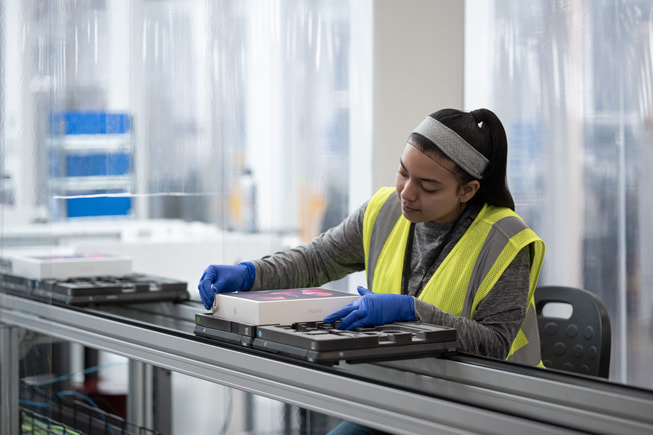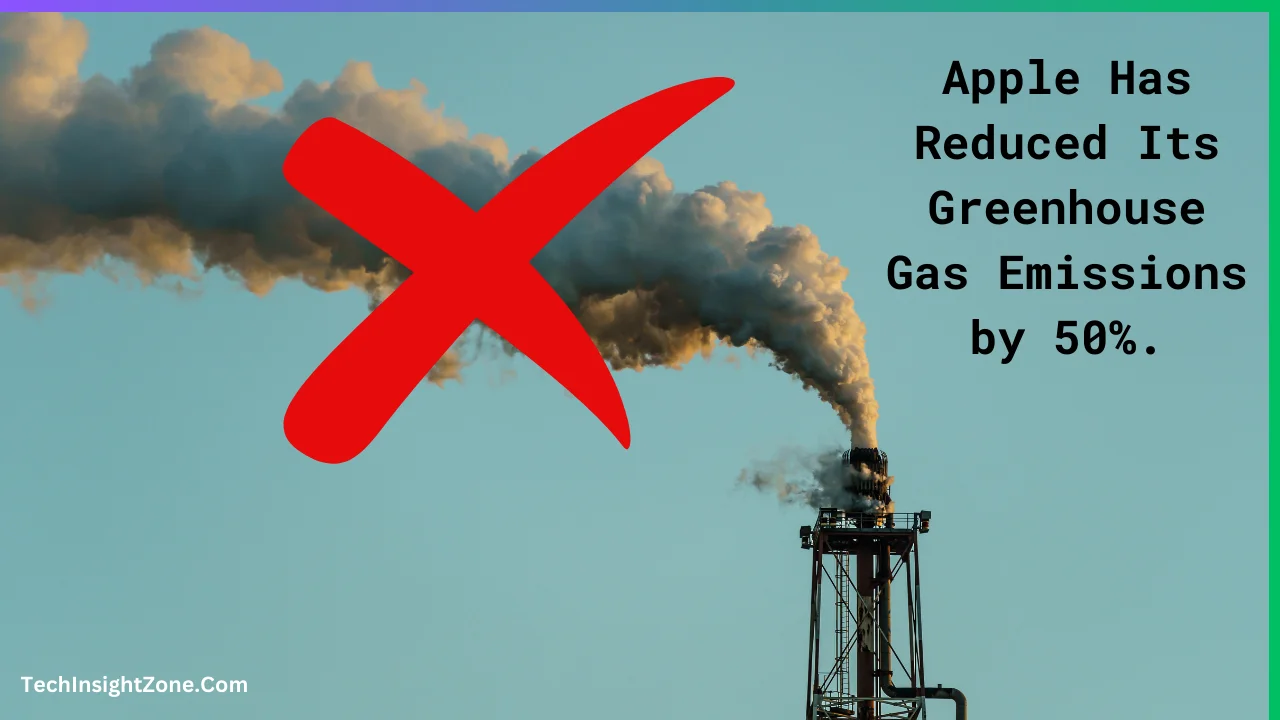Tech titan Apple just unveiled its 2024 Environmental Progress Report, and it’s a breath of fresh air – literally. The report reveals a chomped-down 55% reduction in greenhouse gas emissions since 2015.
That’s a massive chunk taken out of their carbon footprint in just nine years. But with their ambitious goal of total carbon neutrality by 2030 looming, the question remains: can they achieve it?
Let’s examine Apple’s progress and determine if they are truly becoming a climate leader.
Apple is using a six-pronged approach to reduce emissions and become more environmentally friendly:
1. Recycling and Renewable Materials

Apple is making significant strides in using recycled and renewable materials in its products. For instance, in 2024, 56% of the cobalt used in Apple batteries was sourced from recycled materials.
This is a significant increase, demonstrating the potential for recycling to meet the growing demand for critical materials. Such an initiative not only reduces the demand for mining but also decreases the environmental impact associated with the extraction and processing of these materials.
2. Reducing Manufacturing Emissions
Apple is also making substantial progress in reducing manufacturing emissions. The company’s Supplier Clean Energy Program now supports over 16.5 gigawatts of renewable energy worldwide. This transition to clean electricity, coupled with a focus on energy efficiency, has been a major driver of Apple’s emissions reductions.
In fact, more than 100 supplier facilities achieved over 2 billion kilowatt-hours of electricity savings in 2024 alone. This is equivalent to avoiding nearly 1.7 million metric tons of carbon emissions, a 25 percent increase from 2022.
3. Removing Plastic from Packaging

In a bid to further reduce its environmental footprint, Apple is innovating to remove plastic from its packaging. The company is using fiber-based alternatives that not only reduce environmental impact but also enhance the unboxing experience for customers.
In 2024, Apple reached a milestone with the release of its first-ever 100 percent fiber-based packaging for the new Apple Watch lineup and Apple Vision Pro.
4. Green Building Practices
Apple’s commitment to environmental sustainability extends beyond its products and includes the construction of its buildings. More than 100 of Apple’s retail stores, corporate offices, and data centers worldwide are certified through Leadership in Energy and Environmental Design (LEED), and Building Research Establishment Environmental Assessment Method (BREEAM), internationally respected accreditation processes for sustainable buildings.
5. Investing in Carbon Removal Projects
To address residual emissions that are difficult to avoid with today’s available solutions, Apple is investing in high-quality, nature-based carbon projects. This includes the innovative Restore Fund, which pools regenerative agriculture projects with ecosystem conservation and restoration projects. These investments contribute to direct emissions reductions across all operations and its supply chain.
6. Engaging Customers in Recycling
Apple’s efforts to become carbon neutral are not just confined to its operations. The company is also engaging customers and employees in global recycling. Last year, nearly 12.8 million devices and accessories found new owners through AppleCare and programs like Apple Trade In. This not only extends the lifecycle of these devices but also reduces the demand for new products, further decreasing Apple’s environmental impact.
Apple’s commitment is commendable, and they’re definitely moving the needle. However, complete carbon neutrality by 2030 is an aggressive target. External factors like the global shift towards renewable energy and policy changes will also play a big role.
So, a key question remains.
Can Apple Achieve Carbon Neutrality by 2030?
Apple’s ambitious objective to achieve carbon neutrality across its entire business operations by 2030 is a complex task with several potential obstacles:
a. Supply Chain Decarbonization:
A significant challenge for Apple is the decarbonization of its extensive supply chain, which is responsible for a large portion of its carbon footprint. The production of Apple’s devices, which involves electricity usage, contributes to approximately half of the company’s total emissions.
b. Technological Constraints:
Current technological limitations may pose challenges in reducing emissions that are presently unavoidable. This includes emissions related to the generation of clean electricity, such as those from the manufacturing and maintenance of renewable energy infrastructure.
c. Expansion of Carbon Removal Solutions:
Apple is swiftly expanding carbon removal solutions, starting with those available today while exploring future solutions. However, there are hurdles to overcome in the coming years to broaden these efforts.
d. Innovation and Collaboration:
Achieving carbon neutrality necessitates immediate action within Apple’s operations and collaboration across its entire value chain. This includes designing products to be less carbon-intensive through material selection and increased material efficiency, and collaborating with manufacturing partners to create more energy-efficient processes.
e. Regulatory and Policy Challenges:
Changes in environmental regulations, trade policies, and other factors could affect the availability and cost of renewable energy and other resources, potentially impacting Apple’s efforts to become carbon neutral.
Despite these challenges, Apple’s commitment to carbon neutrality and its comprehensive approach to addressing its environmental impact suggest that the company is well-equipped to overcome these obstacles and achieve its goal by 2030.
One thing’s for sure: Apple’s efforts are having a ripple effect across the tech industry, setting a new standard for environmental responsibility. Whether they reach complete neutrality by 2030 or not, they’re paving the way for a greener future in tech, and that’s a win for all of us.





